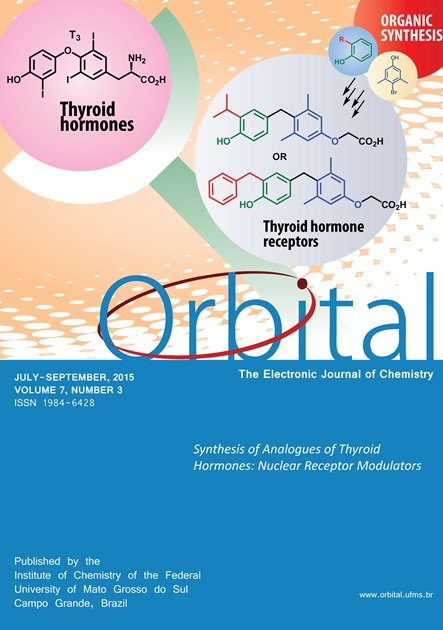Fenton Coagulation/Oxidation Using Fe2+ and Fe3+ Íons and Peracetic Acid for the Treatment of Wastewater
- fenton coagulation/oxidation,
- peracetic acids,
- removing particulate matter,
- disinfection
Copyright (c) 2015 Orbital: The Electronic Journal of Chemistry

This work is licensed under a Creative Commons Attribution-NonCommercial-NoDerivatives 4.0 International License.
Abstract
The Fenton coagulation/oxidation process is divided into two steps: coagulation, in alkaline pH and oxidation, in acid pH. This configuration provides a reduction in oxidant concentration, due to the pretreatment conducted in the coagulation step. This study proposes the substitution of hydrogen peroxide (HP) by peracetic acid (PAA) in a Fenton coagulation process to treat sanitary sewage and provide its disinfection. The new combination is proposed in a single step and presented good results in removing turbidity (98.5%), apparent color (95.4%), phosphorus (100%) and COD (58.2%) even at the effluent natural pH, besides demonstrating higher reduction in E. coli when compared with the process that employs hydrogen peroxide. The formation of Fe3+ ions was shown to be responsible for the removal of the particulate material.

